Donald Trump in announcing that the USA will withdraw from the Paris Climate Agreement made a big fuss about the Chinese being able to increase their emissions, and that this was unfair to the US economy.
So what are the Chinese doing, and is it enough?
Angus Grigg, the AFR China correspondent, took a look.
Trump’s claimed that China is “allowed” to build “hundreds” of coal-fired power plants under the Paris climate change agreement. This is correct, but in reality Beijing is doing the opposite, says Grigg.
In May, the Chinese National Energy Administration said it would suspend approvals for new coal-fired power plants in 29 of the country’s 30 mainland provinces.
In January China announced that 104 coal-fired power plants under construction or being planned had been suspended.
More such announcements are expected.
This is how emissions in China look:
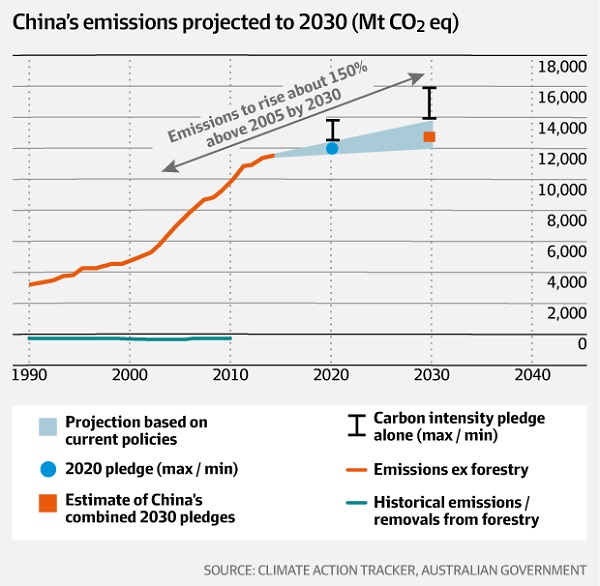
Over the past three years emissions have been stable and may have actually peaked. However, Professor Zhang Haibin of Peking University who has advised the Chinese government on its climate change policy, believes it is too early for such a prediction. He notes that China has done much of the easy work in shutting down energy-intensive plants.
China’s key commitments are:
- to achieve peak emissions by 2030 at the latest
- lower carbon intensity of GDP by 60-65% below 2005 levels by 2030
- increase share of non-fossil fuel energy to around 20% by 2030
- increase forest stock volume.
China specifically agreed with Obama that it would make its “best efforts” to meet these targets, which allow a balance of economic growth and climate action. Their commitment to renewables has been impressive:
-
According to official figures, 17 per cent of China’s energy production came from non-fossils fuels in 2016 but, given the slow rate of grid connection, actual consumption of green power was 13.5 per cent. Coal’s share of the energy mix has fallen from above 70 per cent a decade ago, to 62.4 per cent in 2016, while the government is targeting a further drop to 60 per cent this year.
“Energy demand has decoupled from economic activity and, when this is combined with record annual renewable energy installations, China continues to diversify away from coal faster than anyone expected,” said Tim Buckley, a director of the Institute for Energy Economics and Financial Analysis.
Professor Zhang said China was cautious about being seen in a leadership role, but was likely to provide more funding for climate change programs in developing countries, through the United Nation’s Green Climate Fund, after Mr Trump’s pledge to halt funding.
He said China would be more comfortable forming a co-operative group with the EU, India, Brazil and South Africa.
This is what the targets of the US and some other countries looks like:
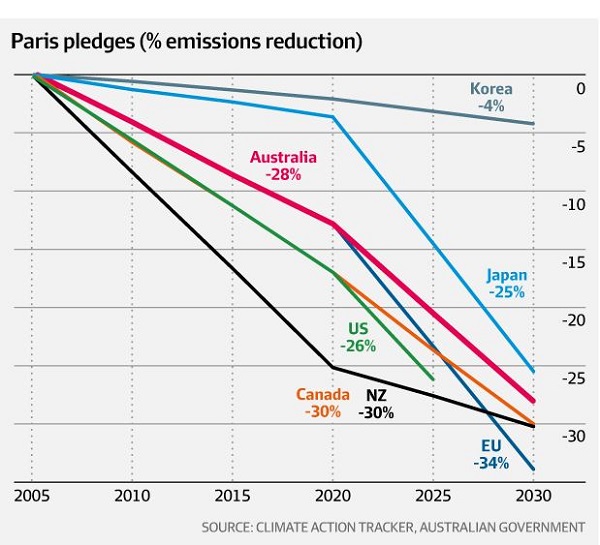
It was always expected that developing countries would be given some slack while the developed countries, which historically caused most of the extra emissions in the atmosphere, would cut back.
Sadly, I think, while that might sound fair, none of it is adequate. See for example my posts A failure of ambition: the UNEP Emissions Gap Report and The folly of two degrees, plus the links to other posts at the end of that post.
I’ve been posting for years that we need zero net emissions by 2030 and need to remove emissions from the atmosphere to reach 350ppm by 2050. I fear that may be too slow.
The graph I’d like to see flatten is the atmospheric CO2 levels at Mauna Loa:
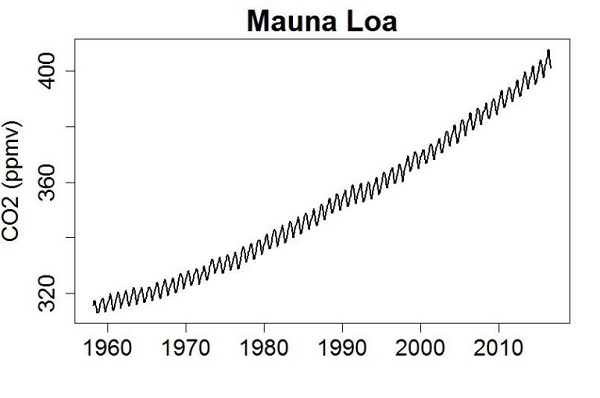
If we don’t see change there, then something needs fixing. Remember, in the WMO’s State of the Global Climate report emissions (CO2, methane and nitrous oxide) were found to be accelerating:
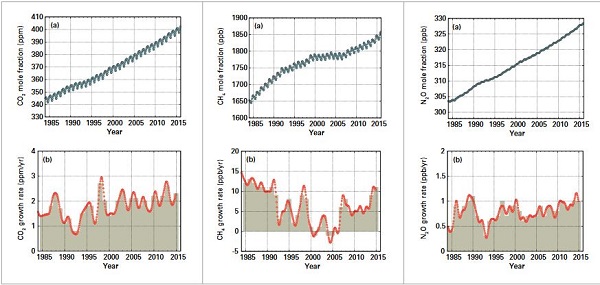
The Chinese are trying to have their cake and eat it, but Trump’s stance is worse than risible.

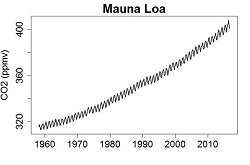
The MAUNA CO2 figures are very scary. The steps up to hell if you like.
If anything, the rate of increase is accelerating when what is needed is rapid deceleration.
As for a country whose so called leaders are supporting Adani what can you say?
John’ I think there are a lot of problems in countries measuring emissions. With fugitive emissions, the US switching to gas might be making things worse, although that shouldn’t increase CO2 short-term. Plus the European’s obsession with biofuels is pretty dodgy, I think. Plus international travel.
One way or another, something is going wrong and I don’t think the scientists are onto it yet.
Slightly off topic but fit within alarming rate of CO2 level rise. ‘Alarming’ is an appropriate word in the context to the degree we are meddling with atmospheric concentration of CO2, which have more or less had a persistent stable cycling for at least 2 to 3 million years and geological studies have show that an increase in the atmospheric concentration of carbon dioxide above 320 ppm last occurred 27 million years ago, which exceeds hominid evolution. So recently I came across an article posted by Prof Steve Turton, who I personally know and find a reliable source of information, otherwise I may have neglected to look further into this. His comment was:
The short term physiological effect of elevated CO2 levels on human health have been studied, for example in submarine environment and diving. However, as far as I could make out, no one really understands the long term effects. A recent paper suggests:
Now is that just another alarmist scientific money making scheme as “conservative’ commenters usually insist, or should we be seriously looking at what the safe levels of CO2 in the atmosphere are for human beings?
Ootz, that’s a real stunner, and makes sense. We just have to imagine a stuffy room, that we can’t escape, and we’d be in trouble.
Mammals have been around for over 300 million years, and have survived three mass extinctions, but numbers were seriously depleted. I vaguely remember one paper about the issue, but from memory it was talking about concentrations of 1500ppm plus being deadly.
I’ve kept the links and will try to do a separate post.